Two club hooks of O. knipovitchi were examined with the scanning electron microscope (SEM). Their relative sizes are seen in the photograph below. Hook number 7 from the proximal end of the ventral hook series (ie, hook V7) (right in photograph) was the largest of all the club hooks. Its mate from the dorsal hook series (hook D7) is seen on the left. Note the large size discrepancy between the two hooks which is unusual for a species of Onykia.

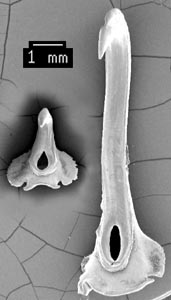
Figure. Frontal views of hook D7 (left) and V7 (right), 295 mm ML, female, USNM specimen, R/V YUZHMOR GEOLOGIA, sta. 34-33. SEM photograph by R. Young.

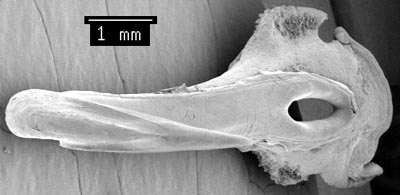
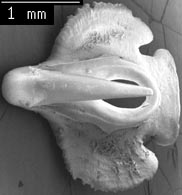
Figure. The two hooks are seen here in a top-frontal view (hook V7 to the left, hook D7 to the right). The lateral grooves of the claw of V7 do not quite join near the claw tip, a well-developed hair-lip is present on the proximal lip and the two lateral lobes differ greatly in size. Hook D7, as is typical, shows bilateral symmetry.SEM photographs by R. Young.


Figure. Side-frontal view of hook V7. Note the hair-lip on the proximal lip. SEM photograph by R. Young.

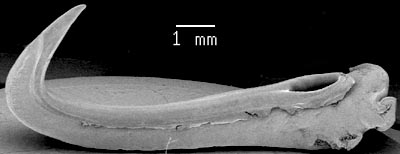
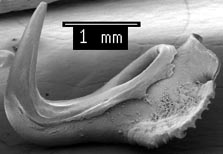
Figure. Side view of the two hooks, V7 on the left and D7 on the right. SEM photographs by R. Young.

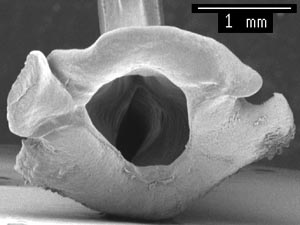
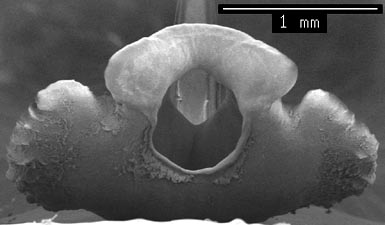
Figure. Attachment-site view of the two hooks, V7 on the left and D7 on the right. SEM photographs by R. Young.
Comments
The presence of a well-developed hair-lip on the proximal lip is unique among Onykia species but common in some other onychoteuthids.




 Go to quick links
Go to quick search
Go to navigation for this section of the ToL site
Go to detailed links for the ToL site
Go to quick links
Go to quick search
Go to navigation for this section of the ToL site
Go to detailed links for the ToL site